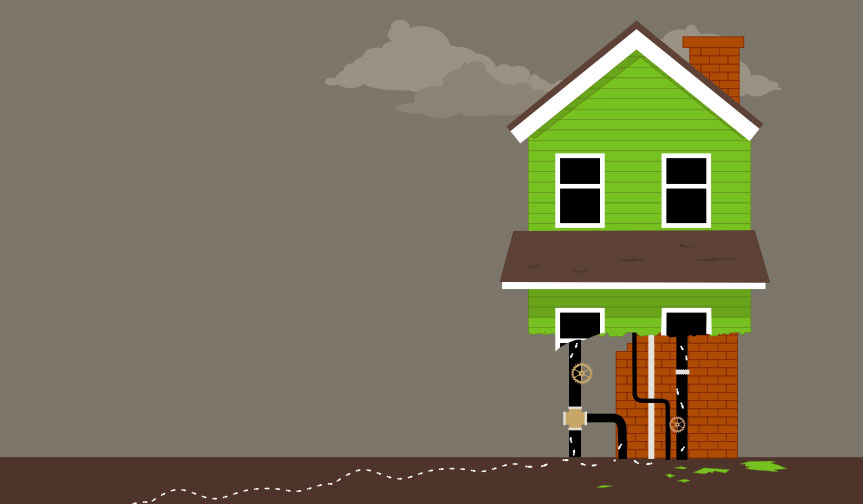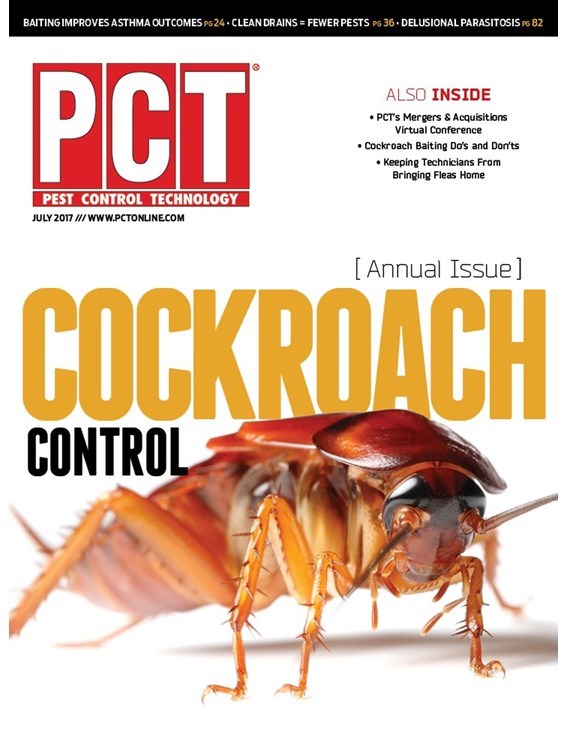
We know that humans have been competing with insects for millions of years as indicated by fossils, fables and forensic science. Early humans adapted to using layers of clothing and setting up indoor living accommodations, or caves, to protect themselves and their possessions from insects. These principles of human harborage have evolved into the free-standing structures we know today, but the hope of building out insects is still present. According to the United States Department of Agriculture, we compete daily with insects for food, fiber and forestry products. In our homes, termites are one of the more prevalent threats. Advances in the use of physical barriers to effectively exclude subterranean termites have made it possible to add new dimensions to integrated pest management (IPM) strategies for both pre-construction and post-construction implementations. For more than 20 years we have been evaluating physical and chemical barriers against termites and other structural and household pests. Products such as particulate barrier systems have applications on the exterior of structures, and in and around interior plumbing penetrations. Sealants, membranes and wire meshes can be used as effective barriers to invading insect populations at the soil, concrete slab, veneer interfaces, as well as soffit and roof areas. Development of elastomeric membranes and advances in their use provides opportunities for pest management professionals to effectively solve problems with cracked slabs, cold joints and other construction abnormalities, which in the past have resulted in the incursion of pest populations. Sustainable building practice is the use of environmentally responsible processes that are resource-efficient. These are not new concepts, but hold a great deal of promise in ensuring the building is efficient during design and construction, as well as in operation and maintenance for the life of the structure.

It is known that there are several requisites for life that are required for animals, such as insects, to survive. Heterotrophs must harvest food for energy and growth and have access to oxygen to be successful. Additionally, water, a favorable environment that provides the appropriate temperature and humidity, shelter from elements, and others of the same species to advance the population are required for success of an organism. To effectively control a pest population, reducing or eliminating access to any of these conducive conditions is key. Use of sustainable building practices in an IPM program results in effective pest exclusion with long-term efficacy. Building materials used in this type of control are environmentally sound and generally require little maintenance.
AN AGGREGATE BARRIER. One material that is at the forefront of pest exclusion, without the use of pesticides, is an aggregate barrier. These also are referred to as particulate termite barriers and are made up of specifically-sized aggregate. Particulate termite barriers have been widely and successfully used in other parts of the world since the 1980s. However, they have never been commercially available in the mainland United States. The principle behind particle barriers has been well researched by Ebeling and Pence (1957)1, Su et al. (1991)2, Su and Scheffrahn (1992)3, Yates et al. (2003)5 and Keefer et al. (2013)4. Research with particle barriers for the mainland United States was initiated at Texas A&M University in 2003 at the request of a Texas pest control professional. Various particle characteristics were evaluated, including size, angularity and interstitial space between particles. Results showed that a particle blend of aggregate sieve sizes 8, 10 and 12, as well as a mean angularity of 3200+ and 40% interstitial space, was most effective against tunneling subterranean termites4. This material is generally installed in a wedge formation that measures 4 inches across and 5 inches down, directly against the foundation. Particle barriers were initially installed in 15 homes in South Texas in 2005. Each of the homes were infested with subterranean termites prior to the start of the experiment. Homes in this study were monitored for 10 years and the pest control professional monitoring reported no occurrences of termites during this field evaluation. Particle barriers were then reduced to practice in seven Texas homes in 2015. Each structure was initially infested with termites, but to date, none have shown evidence that termites have breached the particle barrier. Aggregate barriers have also shown success when installed in bath traps or slab leave-outs. During construction and after the foundation is poured, cardboard and other debris is removed from bath trap areas and the particle barrier is installed. Application of this material protects the structure from termite intrusion in these vulnerable areas. Implementation of particle barriers has expanded across the United States and serves as a reliable supplementation to termiticide use around new and existing structures.


The building envelope is a physical barrier between the interior and exterior of a structure that has been proven to keep energy in and environmental elements out. Each of these materials are upgrades to the building envelope that have shown to keep termites and other pests out. The goal of these types of materials is to build out pests with sustainable systems and exclude pests for the life of the structure. Each of the pest exclusion materials discussed herein are free of pesticides and are classified as “devices” or barriers by regulators. Integrated pest management tactics employ the use of physical and mechanical barriers to control pests, along with chemical, biological and cultural, or sanitation, methods. In addition, federal and state governments emphasize sustainable systems as part of sound and effective IPM programs. An example of such initiative would be NPMA’s QualityPro Certification Program, a service option and certification developed by the National Pest Management Association that is awarded to companies that provide service options that are least-risk to people, property and the environment.

References:
1Ebeling, W.J. and R.J. Pence. 1957. Relation of particle size to the penetration of subterranean termites through barriers of sand and cinders. J. Econ. Entomol. 50: 690-692.
2Su, N.-Y., R.H. Scheffrahn, and P.M. Ban. 1991. Uniform size particle barrier: a physical exclusion device against subterranean termites (Isoptera: Rhinotermitidae). J. Econ. Entomol. 84: 912-916.
3Su, N.-Y. and R.H. Scheffrahn. 1992. Penetration of sized-particle barriers by field populations of subterranean termites (Isoptera: Rhinotermitidae). J. Econ. Entomol. 85: 2275-2278.
4T. Chris Keefer, Dan G. Zollinger, and Roger E. Gold. 2013. Evaluation of aggregate particles as a physical barrier to prevent subterranean termite incursion into structures. Southwest. Entomol. 38: 447–464.
5Yates, J.R., J.K. Grace, and J.N. Reinhardt. 2003. Installation guidelines for the Basaltic Termite Barrier: a particle barrier to Formosan subterranean termites (Summary). Sociobiology 41: 113-114.
Krejci is lead research & technical sales associate for Polyguard Products’ TERM Barrier Division. Gold is former professor and endowed chair for Urban and Structural Entomology at Texas A&M University.

Explore the July 2017 Issue
Check out more from this issue and find your next story to read.
Latest from Pest Control Technology
- SiteOne Hosts 2024 Women in Green Industry Conference
- Veseris Celebrates Grand Reopening of the Miami ProCenter
- Rollins' 2024 Second Quarters Revenues up 8.7 Percent YOY
- Fleetio Go Fleet Maintenance App Now Available in Spanish
- German Cockroach Control Mythbusting
- Total Pest Control Acquires Target Pest Control
- NPMA Workforce Development Shares Hiring Updates
- Certus Acquires Jarrod's Pest Control





